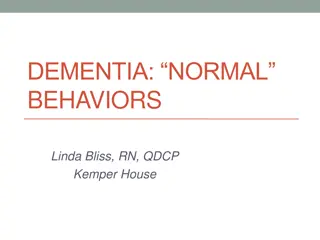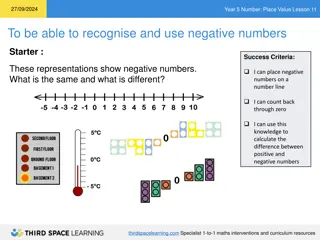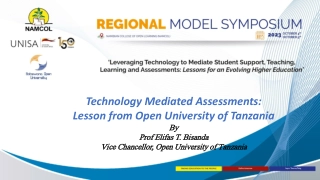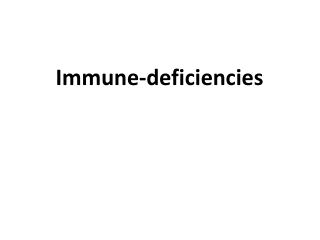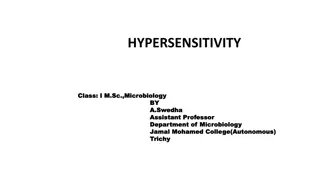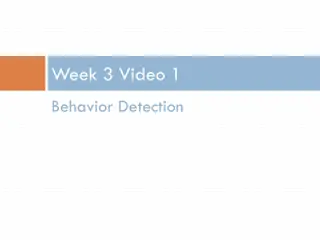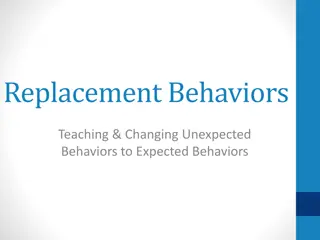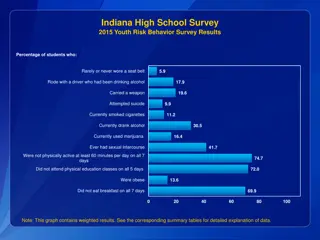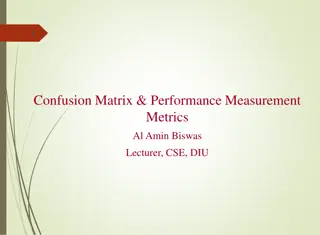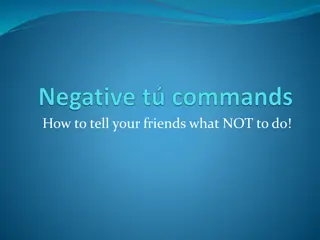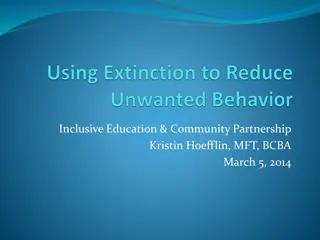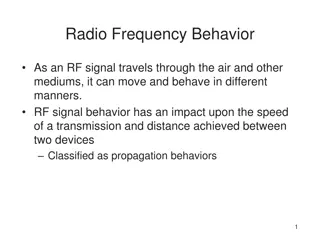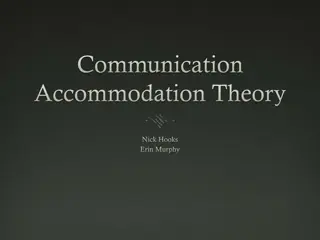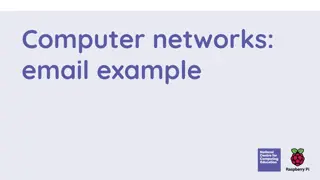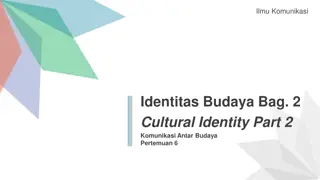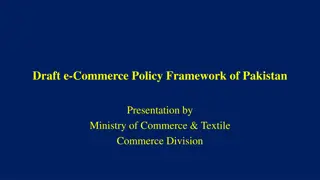Analysis of Negative Behaviors in Computer-mediated Communication
This analysis delves into negative behaviors in computer-mediated communication, exploring threats to face value and interactions in virtual reference encounters. It discusses the concept of face-work, the importance of maintaining positive social value, and the impact of face threats on individuals' self-image and relationships. The study also examines Erving Goffman's insights on face-to-face behavior and the strategies individuals employ to navigate challenging social situations.
Download Presentation

Please find below an Image/Link to download the presentation.
The content on the website is provided AS IS for your information and personal use only. It may not be sold, licensed, or shared on other websites without obtaining consent from the author. Download presentation by click this link. If you encounter any issues during the download, it is possible that the publisher has removed the file from their server.
E N D
Presentation Transcript
About Face Threat: An Analysis of Negative Behaviors in Computer-mediated Communication Marie L. Radford, Ph.D., Associate Professor, Rutgers University (mradford@rutgers.edu) Jocelyn A. DeAngelis, Ph.D., Adjunct Professor, Rutgers University (jocelyn.scils@rutgers.edu) Gary P. Radford, Ph.D., Professor, Fairleigh Dickinson University (gradford@fdu.edu) Lynn Silipigni Connaway, Ph.D., Senior Research Scientist, OCLC New York State Communication Association October 21-23, 2011
Virtual Reference (VR) o Web-based chat & instant messaging (IM) CMC reference services o VR encounters capture full transcript of interaction between reference librarian & user o VR interactions complex & fraught with possibility of misunderstandings & miscommunications
Interaction Ritual: Essays on Face-to-Face Behavior goffman On Face-Work: An analysis of Ritual Elements in Social Interaction (1967) Erving Goffman 1922-1982
Face-Work Much of the activity occurring during an encounter can be understood as an effort on everyone s part to get through the occasion and all the unanticipated and unintentional events that can cast participants in an undesirable light, without disrupting the relationships of the participants (Goffman, 1967, p. 41)
Face Defined Positive social value person claims Self-image in terms of approved social attributes
Face-Work in Encounters Face is located in flow of events o Feelings about face reinforced by encounters o If better face established feel good o If expectations not fulfilled feel bad or hurt o Neutral experience expected, not memorable
Face Threat = Negative Face-work Face Threat o Communication threatens face of interactants Types o Losing Face Person caught in embarrassing or damaging position (e.g., in a lie or inappropriate behavior) o Wrong Face or Out of Face Experience shame Possible to maintain confidence, if others cover (e.g., one makes faux pas & others pretend not to notice) Poise is ability to conceal wrong face or out of face
Face-Work in VR Goffman provides powerful frame to analyze VR encounters Face & face-work appear in flow of transcript (event) Analysis identifies instances or lack of face- work
Methodology Data from Institute of Museum & Library Services Grant of $684,996 Seeking Synchronicity: Evaluating Virtual Reference services from user, non-users, and librarian perspectives o Rutgers, The State University of New Jersey and OCLC, Online Computer Library Center, Inc. o Project duration: 2 Years (10/05-3/08) o 4 phases including transcript analysis
Sample Selection 850 VR transcripts randomly selected from 479,673 transcripts (8/04-11/06) 746 usable transcripts qualitatively analyzed & coded 1 transcript selected to illustrate face-threats in VR Physics - The Accelerating Bumper Car Duration: 17 min., 8 sec.
Conclusion Goffman offers powerful way to gain insights into VR practice & understanding of interpersonal dynamics in CMC Physics transcript analysis reveals, similar to the FtF environment, importance of face-work, e.g., politeness rituals Expressions of deference & demeanor (Goffman, 1956), are important to success of VR encounters
Future Research Many questions involving participant s perception of these interactions remain unanswered New grant: Cyber Synergy (10/11-9/13) for $250K Next analyze 500+ transcripts from 2010 Developing theoretical model based on Goffman
End Notes This is one of the outcomes from the project Seeking Synchronicity: Evaluating Virtual Reference Services from User, Non-User, & Librarian Perspectives Funded by IMLS, Rutgers University, & OCLC Online Computer Library Center, Inc. Web site:http://www.oclc.org/research/ activities/synchronicity/default.htm
Questions & Comments?



